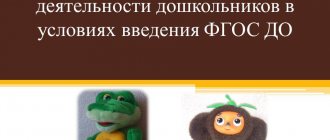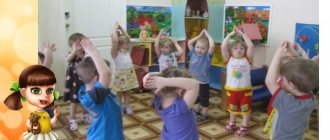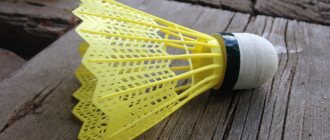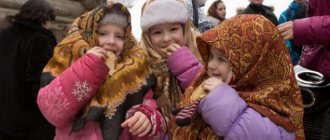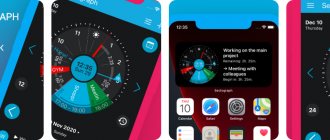The importance of innovative activity in a preschool institution
Innovation (eng. innovation) - innovation, innovation. The use of innovations in kindergarten involves the introduction into the educational process of updated, improved and unique ideas obtained through the creative efforts of the teacher. The goal of innovative activity in a preschool institution is to increase the efficiency of the learning process and obtain better results.
When carrying out innovative activities, the preschool teacher is given the following tasks:
- development of the individuality of pupils;
- developing children's initiative, independence, and ability for creative self-expression;
- increasing curiosity and interest in research activities;
- stimulation of various types of activity of pupils (play, cognitive, etc.);
- increasing the intellectual level of children;
- development of creativity and innovative thinking.
Those who do not use new means must expect new troubles.
Francis Bacon, English philosopher
An important difference between innovative activities and traditional ones is that the teacher plays the role not of a mentor, but of an accomplice in the process and adheres to the position “not next to, not above, but together.” Thus, the child feels more freedom, which encourages greater creative activity. And also, knowledge is not given to the student in a ready-made form, as before, but is obtained by the child himself in the course of his research activities.
Types of innovative pedagogical technologies in preschool educational institutions
Innovative pedagogical technologies include:
- health-saving;
- technologies of design and research activities;
- information and communication;
- lapbook technologies;
- person-oriented;
- gaming technologies;
- problem-based learning technologies, etc.
MAGAZINE Preschooler.RF
Innovative activities of preschool educational institutions in the context of the introduction of Federal State Educational Standards for preschool education.Winner of the all-Russian competition “The most popular article of the month ” JANUARY 2018
The preschool educational institution must quickly respond to changes in the preschool education system, find ways and means for the effective development of the institution.
In connection with the introduction of the Federal State Educational Standard, it became relevant for teachers to rethink the content and forms of work with children. The only possible way is the innovative activity of the kindergarten in general and each teacher in particular.
— What do you think innovation is?
Innovation is the creation and use of a new component that causes a change in the environment from one state to another. Accordingly, innovative technologies in the educational process mean the creation of a new, previously non-existent component.
The purpose of using innovations is to create a person-oriented educational environment in preschool educational institutions, which allows creating conditions for full physical, spiritual, psycho-emotional health, interpersonal, group developmental interaction between children, parents, teachers and specialists.
Objectives: to educate the social and personal qualities of preschoolers who can think outside the box and creatively; develop initiative, curiosity, volition, the ability for creative self-expression, stimulate communicative, cognitive, play and other activity of children in various types of activities; teach children to apply modern innovative technologies aimed at the successful socialization of the individual in society and increasing the level of intellectual thinking and creative imagination.
Modern educational technologies include:
Health-saving technologies
The goal of health-saving technologies is to provide the child with the opportunity to maintain health, to develop in him the necessary knowledge, skills and habits for a healthy lifestyle.
Health-saving pedagogical technologies include all aspects of the teacher’s influence on the child’s health at different levels - informational, psychological, bioenergetic.
In modern conditions, human development is impossible without building a system for the formation of his health. The choice of health-saving pedagogical technologies depends on:
- depending on the type of preschool institution,
- on the length of time the children stay there,
- from the program in which teachers work,
- specific conditions of the preschool educational institution,
- professional competence of the teacher,
- children's health indicators.
Forms of work include sports festivals, physical education sessions between classes, eye exercises, breathing exercises, finger and dynamic exercises, relaxation, sports games, hardening, water procedures, walks not only in the kindergarten, but also in forested areas, which can already be called walks - hikes. The use of the latter form makes it possible to solve the problems of introducing preschoolers to nature, instilling a caring attitude towards it, and studying the immediate social environment. The main difference between walks and regular walks is the targeted development of physical qualities and intense physical activity. More information about walks - hikes - w. “Senior teacher” , No. 5, 2011.
Technologies of project activities
Goal: Development and enrichment of social and personal experience through the inclusion of children in the sphere of interpersonal interaction.
The meaning of project activity is to create problem-based activities that are carried out by the child together with the teacher. The knowledge that a child gains while working on a project becomes his personal property and is firmly anchored in the existing system of knowledge about the world around him.
Design forces teachers themselves to be in a space of many possibilities and changes the organization of work with children. Project activities do not allow standard actions,
requires constant creative search for ways to solve problems. Thus, the project method provides a mode for the development of preschool educational institutions.
Classification of educational projects:
- “game” - children’s activities, participation in group activities (games, folk dances, dramatizations, various types of entertainment);
- “excursion” - aimed at studying problems related to the surrounding nature and social life;
- “narrative” - during the development of which children learn to convey their impressions and feelings in oral, written, vocal artistic (painting), musical (playing musical instruments) forms;
- “constructive” , aimed at creating a specific useful product: putting together a birdhouse, arranging flower beds.
Research technology
The goal of research activities in kindergarten is to form in preschoolers the basic key competencies and the ability for a research type of thinking.
It’s good to use solutions to problem situations (how and what to get from Volgograd to Africa? What needs to be done so that there are always green onions in the group?..). Collecting also contributes to the development of cognitive and research activities: let’s say, we decided to create a collection of photographs of African animals. First, let's find out where these photos can be taken. During the search, of course, we will read about these animals (why they have such coloring, what they eat, their way of life...). Let's design an album or exhibition - we'll introduce you to some design techniques. Undoubtedly, modeling is an innovative activity of a preschooler. How do floods occur, why do animals die in “oil” rivers... - these questions can be easily answered by modeling the situation.
Methods and techniques for organizing experimental research activities:
- solving problem situations (how and what to get from Volgograd to Africa? What needs to be done so that there are always green onions in the group?..).
- heuristic conversations
- observations
- modeling (How do floods occur, why do animals die in “oil” rivers... - these questions can be easily answered by modeling the situation)
- experiments
- recording the results: observations, experiences, experiments, work activities
- “immersion” in the colors, sounds, smells and images of nature
- imitating the voices and sounds of nature
- use of artistic words
- didactic games, game-based educational and creative development situations;
- work assignments, actions
- Collecting also contributes to the development of cognitive and research activities: let’s say, we decided to create a collection of photographs of African animals. First, let's find out where these photos can be taken. During the search, of course, we will read about these animals (why they have such coloring, what they eat, their way of life...). Let's design an album or exhibition - we'll introduce you to some design techniques.
Information and communication technologies
The world in which a modern child develops is fundamentally different from the world in which his parents grew up. This places qualitatively new demands on preschool education as the first link of lifelong education: education using modern information technologies (computer, interactive board, tablet, etc.). The use of ICT in classes in preschool institutions has a number of advantages over traditional forms of organizing classes. The computer is attractive to children; the use of animation, slide presentations, and films makes it possible to arouse active cognitive interest in children in the phenomena being studied. Methods of visual support of the material make it possible to achieve long-term concentration of pupils’ attention, as well as simultaneous impact on several of the child’s senses, which contributes to a more durable consolidation of the new knowledge acquired. But I believe that a computer cannot (and should not) replace work on developing fine motor skills, eye-to-eye
Informatization of society poses tasks for preschool teachers:
- to keep up with the times,
- become a child’s guide to the world of new technologies, a mentor in choosing computer programs,
- to form the basis of the information culture of his personality,
- improve the professional level of teachers and the competence of parents.
Solving these problems is impossible without updating and revising all areas of the kindergarten’s work in the context of informatization.
Preschooler portfolio technology
A portfolio is a collection of a child’s personal achievements in various activities, his successes, positive emotions, an opportunity to once again relive the pleasant moments of his life, this is a unique route for the child’s development.
There are a number of portfolio functions:
- diagnostic (records changes and growth over a certain period of time),
- meaningful (reveals the entire range of work performed),
- rating (shows the range of skills of the child), etc.
Technology "Teacher's Portfolio"
Modern education needs a new type of teacher: a creative thinker who is proficient in modern educational technologies, methods of psychological and pedagogical diagnostics, methods of independently constructing the pedagogical process in the conditions of specific practical activities, and the ability to predict one’s final result.
Every teacher should have a record of success, which reflects everything joyful, interesting and worthy that happens in the life of a teacher. A teacher’s portfolio can become such a dossier.
A portfolio allows you to take into account the results achieved by a teacher in various types of activities (educational, educational, creative, social, communicative), and is an alternative form of assessing the professionalism and performance of a teacher.
Gaming technology is built as a holistic education, covering a certain part of the educational process and united by common content, plot, and character. It includes sequentially:
- games and exercises that develop the ability to identify the main, characteristic features of objects, compare and contrast them;
- groups of games to generalize objects according to certain characteristics;
- groups of games, during which preschoolers develop the ability to distinguish real from unreal phenomena;
- groups of games that develop the ability to control oneself, speed of reaction to a word, phonemic awareness, ingenuity, etc.
Learning in the form of a game can and should be interesting, entertaining, but not entertaining. To implement this approach, it is necessary that educational technologies developed for teaching preschoolers contain a clearly defined and step-by-step described system of gaming tasks and various games so that, using this system, the teacher can be confident that as a result he will receive a guaranteed level of learning a child of one or another subject content. Of course, this level of the child’s achievements must be diagnosed, and the technology used by the teacher must provide this diagnosis with appropriate materials.
In activities with the help of gaming technologies, children develop mental processes.
Gaming technologies are closely related to all aspects of the educational work of a kindergarten and the solution of its main tasks.
TRIZ technology
TRIZ (the theory of solving inventive problems), which was created by the scientist-inventor T.S. Altshuller.
The teacher uses non-traditional forms of work that put the child in the position of a thinking person. TRIZ technology adapted for preschool age will allow you to educate and train a child under the motto “Creativity in everything!” Preschool age is unique, because as a child is formed, so will his life, which is why it is important not to miss this period to reveal the creative potential of each child.
The purpose of using this technology in kindergarten is to develop, on the one hand, such qualities of thinking as flexibility, mobility, systematicity, dialecticity; on the other hand, search activity, the desire for novelty; speech and creative imagination.
The main goal of using TRIZ technology in preschool age is to instill in the child the joy of creative discovery.
The main criterion in working with children is clarity and simplicity in the presentation of material and in the formulation of a seemingly complex situation. You should not force the implementation of TRIZ without children understanding the basic principles using simple examples. Fairy tales, playful, everyday situations - this is the environment through which a child will learn to apply TRIZ solutions to the problems he faces. As he finds contradictions, he himself will strive for an ideal result, using numerous resources.
Personally-oriented technologies: the goal of these technologies is to create democratic partnership-humanistic relationships between a child and a teacher, as a result of which conflict-free, comfortable, safe conditions are provided for the social development of each child. With a person-centered approach, the child’s personality is placed at the forefront of education and training. Proof of the use of these technologies are maps of individual development routes for pupils, high monitoring rates, a positive emotional mood of the group as a whole and each individual child, a differentiated approach in classes and in joint activities.
Club work can be considered both as an indicator of a person-oriented approach and as an independent innovative activity. After all, the club program is always something new, or at least broader than the general education program.
Developmental technologies: in traditional education, a child is presented with a ready-made product, an action pattern, for study. During developmental education, a child must independently come to an opinion or a solution to a problem as a result of analyzing his actions.
— What meets these requirements?
These requirements are met by LEGO constructors, chess and checkers, Cuisenaire's colored counting sticks, and Nikitin's educational games.
Problem-dialogical technology involves the problematic introduction of new material: a task or question is posed for research, and methods for finding a solution organize the independent “discovery” of knowledge by children in a creative search process. Let's say the older group has to show a puppet show for kids. “bi-ba-bo” dolls in the group... and the children offer to make dolls from... (mugs, natural material, gloves or mittens...)
Corrective technologies: their goal is to relieve the psycho-emotional stress of preschool children. Types: fairy tale therapy, color therapy, music therapy, play therapy, puppet therapy, animal therapy, art therapy. You can read more in the section. No. Senior teacher,” No. 10, 2008.
Every teacher is a creator of technology, even if he deals with borrowings. The creation of technology is impossible without creativity. For a teacher who has learned to work at the technological level, the main guideline will always be the cognitive process in its developing state. Everything is in our hands, so they can not be omitted.
Someone famous said that a person cannot truly improve if he does not help others improve.
Create it yourself. Just as there are no children without imagination, there is no teacher without creative impulses.
| Next > |
Project technologies
Project activities in kindergarten involve conducting joint group projects. In the process of their implementation, preschoolers actively develop cognitive and research abilities. This helps the development of an independent creative personality capable of solving complex problems. If in traditional educational activities the learning process involves providing students with ready-made information, then project activities allow children to come to the result themselves.
During the implementation of the project, children’s cognitive activity increases
The practice of modern work of a preschool institution identifies the following types of project activities:
- Research - children conduct experiments and then draw up the results, for example, in the form of a newspaper or drawing.
- Playful - involves taking on the role of a character in a story or fairy tale.
- Informational - children collect information on a certain topic, and then implement the work done in the form of drawings, exhibitions, collages, stories.
- Creative - usually does not have a clearly developed structure and involves the joint work of children and the teacher. The result can be exhibitions, albums, newspapers, etc.
For each preschool age, the project solves different problems depending on the children’s skills and interests. Social-family (“Family Tree”) and educational projects (“Animals and Birds,” “My Friends,” “Plants Around Us”) will be useful for preschoolers of any age.
Using a lapbook
A laptop, or interactive folder, is a homemade folding book that can contain all sorts of elements: pockets, doors, envelopes, etc. A laptop is the result of the joint activity of a teacher and children. It collects material on a specific topic. This method provides the child with the opportunity to familiarize himself with the visual material - he decides how to interact with the lapbook, folds and opens certain parts at will.
A laptop will help you consolidate the material you have covered, as well as periodically remind you of it in the future. This interactive folder is often used at the final stage of project activity. The laptop is well suited for use in groups of different ages. For example, information can be distributed in this way: for younger preschoolers, provide envelopes with pictures of animals inside, and leave for older children material where they need to apply reading, counting skills, etc.
Lapbook - an amazing book with tasks that preschoolers work with with enthusiasm
For older children, it is better to highlight specific topics. For example, highlight individual types of insects in one lapbook: for example, use information only about butterflies, highlight their species, or pay attention to beetles, etc.
Making a laptop
For the base of a lapbook, it is best to use A3 cardboard, but any other dense material will do. Nowadays you can find special cardboard base folders in stores. Then all that remains is to paste the base with the necessary details and paint it. If you use cardboard or a sheet of thick paper, then fold it in half, like a book, or into 3 parts so that it looks like a door. You can fold the base into an accordion shape. And then add any details you wish. These can be pockets with cards, small brochures, envelopes, etc. Each envelope or pocket is filled with thematic material: cards, drawings, riddles, etc.

You can fold a lapbook in any convenient way, it all depends on the imagination of the creator
Next, the base is filled together by children and teachers with the necessary materials. Let’s give an example of filling out a lapbook on the topic of the environmental project “Take care of nature”; it consists of 7 games and activities:
- Game "Who eats what?" is a rotating picture in which you need to match the animal with the type of food it eats.

You need to rotate the circle to match the food to a specific animal.
2. A book with finger games on the theme of nature. Finger games will help develop fine motor skills and relieve tension.
3. A bag of garbage. By assembling it, children learn to maintain order and develop fine motor skills.
By learning to put garbage in a toy bag, children will become more tidy at home.
- The game in an envelope “Whose House” consists of cards with animals and different types of dwellings. Children need to match them.
To complete the task, you need to match the animal and its place of residence
- 4 envelopes with different seasons. It is required to place the cards with the corresponding signs in the required envelope.
- 4 pictures of different birds, next to a square with Velcro, on which you need to stick a card with the type of food that each bird eats.

Every bird needs the right food
- Drawing of the game “Walk along the path and don’t touch the flowers.” Teaches you to be attentive.

When designing a lapbook, you can use pieces of colored paper, fabric and various decorative elements.
The finished lapbook can be used in classes, recalling and consolidating the material covered, and children can also look at it independently in their free time.
Cards for recording the results of experimental activities
Experimental activities are one of the favorite activities of preschoolers, because it is inherent in children by nature to conduct experiments and explore something new. The final stage of any work done is summing up and drawing conclusions. The verbal method is the usual method for this. Innovative is the use of so-called results cards, which have recently become increasingly popular. This is a graphical method. Information formatted this way is easier to remember.
Using pictures, the scheme of the experiment becomes clearer
Working with cards is based on previously obtained ideas and your own assumptions. Children conduct experiments based on information cards, and also mark all their observations there.
Development of an innovative project in kindergarten
Of course, innovative activity as a new type of work with children has its share of risks. But if you think through all the nuances when organizing upcoming activities, these risks will be minimized. The teacher should consider:
- choosing the direction of innovation work;
- development of a concept and program for innovation activities;
- creating conditions for the implementation of an innovative project;
- preparation and competent introduction of documentation on innovation activities.
Before introducing an innovative project into work with children, the teacher should carefully study all the nuances of the chosen topic
The task of an innovative teacher is to create motivation for the group to participate in joint activities, taking into account the individual characteristics of each student and his psychological readiness.
Structure of the innovation process:
- Analysis and collection of information.
- Selection and implementation of innovations.
- Generalization of experience and diagnostics of introduced information.
